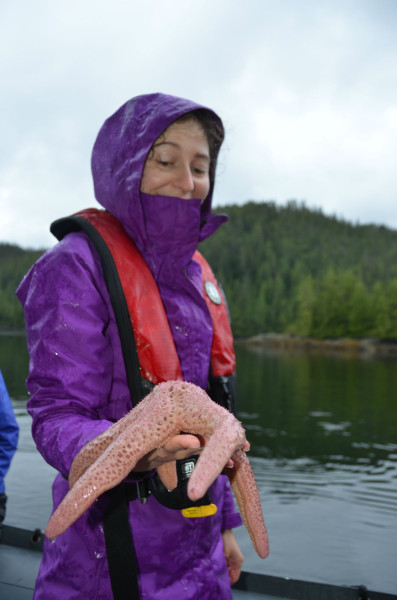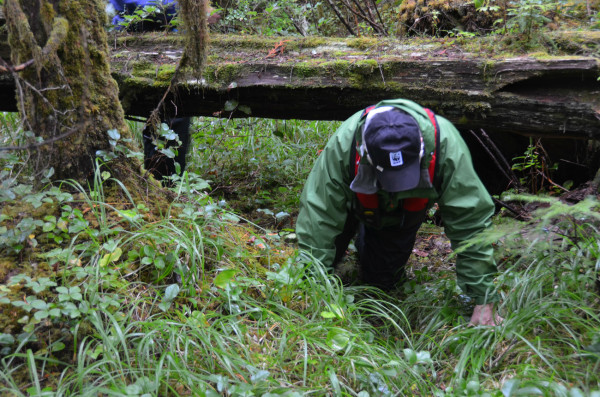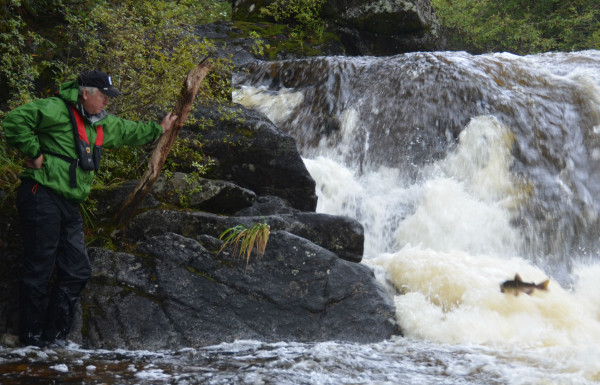Journey to the Great Bear (Day 4): The weight of our choice makes it simple
We woke up undamaged from last night’s storm, thanks to the small, deep cove our skipper Neil found off Meyers Passage. But it must have been quite a storm out in Hecate Strait. Winds blew between gale and storm force, with gusts possible at hurricane force, according to the marine weather forecasts we heard, with waves up to ten metres possible. Ten metre waves are serious, particularly near a shore where there are complex tides. It’s one of the reasons Hecate Strait is known as one of the world’s most dangerous waterways. Needless to say, it’s not the kind of place to send ships with dangerous cargo – like diluted bitumen.
It was low tide when we got up, so we explored the intertidal ecosystem by kayak. Sea stars (many varieties), crabs, jellyfish, clams, hooded nudibranch, and kelp were among the species we saw.
In the afternoon, we tried to track wolves. I didn’t know that wolves create trails. They’re as easy to walk on as a well used portage, because the wolves use them again and again to reach their hunting grounds. Well, easy, I suppose if you are four feet tall. For me, standing over six feet, it was a challenge: ducking under trees, wading streams, sometimes literally crawling. We saw evidence of wolves, but no luck in spotting them.
However, we did find an incredible waterfall. I was mesmerized watching the salmon trying to fight their way up a steep ten foot drop. Later, we watched porpoises play in the wake of the boat.
The sheer mass of life in this landscape is palpable. And as I think back to last night’s storm, it’s a stark reminder of how much hangs in the balance of our choices. How much are we willing to risk—willing to lose—for an imagined short-term profit? The balance simply doesn’t add up. The calculus can only lead us to one sane conclusion. This is no place for oil pipelines. This is no place for oil tankers. The value of what we have in the Great Bear is simply too much.




